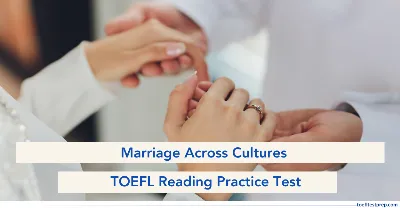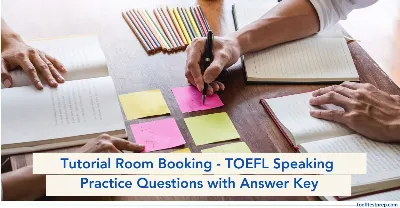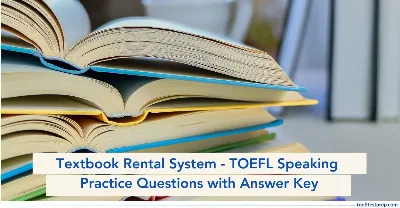Government and Poverty - TOEFL iBT® Reading Practice Test

"Improve your skills for the TOEFL Reading section with our practice passage on 'Government and Poverty,' exploring how governmental policies address the issue of poverty and its societal impact."
Key Highlights
In the TOEFL Reading section, you might come across passages discussing topics like 'Government and Poverty.' These passages explore the role of government in tackling poverty and its impact on society. Practicing with readings on this subject will help you understand complex social and political issues, strengthening your comprehension skills for the TOEFL exam.
Reading Instructions:
- You have 15 minutes to read the following passage and answer all 9 questions related to it.
- Most questions are worth 1 point, but the last question is worth more. The directions indicate how many points you will receive for that specific question.
- The specific section/paragraphs have been provided again with the question for ease of understanding and quick solutions.
- Some questions include a word or phrase that is highlighted in the question as well as in the paragraph for quick reference.
Government and Poverty
The relationship between government rules and poverty is a topic of great interest, covering different aspects of economic and social support. Poverty, defined as the condition where people lack enough money to meet basic living standards, affects billions around the globe. Governments have a significant impact on reducing poverty through their programs, which can either help or worsen economic gaps. Strategies like social support systems, tax policies, and educational initiatives are key in shaping the economic landscape.
Understanding these dynamics is crucial for creating effective solutions aimed at reducing poverty and promoting social fairness. Social support programs are one of the main ways governments can fight poverty. These programs are designed to provide financial help, healthcare, and essential services to low-income individuals and families. For example, in the United Kingdom, the Universal Credit system aims to combine various benefits into a single payment, making it easier for those in need to access support. Research shows that well-structured support programs can lead to better health outcomes and higher educational achievement among recipients, helping them move up the economic ladder. But critics argue that poorly designed support systems can unintentionally create dependency, discouraging people from seeking jobs and contributing to the economy. This raises important questions about finding the right balance between providing support and encouraging self-sufficiency.
Tax policies also play a vital role in tackling poverty and shaping economic unfairness. Progressive taxation, where higher earners pay a larger percentage of their income, is often seen as a way to share wealth and fund social programs. For example, Scandinavian countries like Sweden and Norway have high tax rates on the wealthy to support complete social support systems, resulting in lower poverty rates and greater income equality. On the other hand, regressive tax systems, which place a heavier burden on lower-income individuals, can worsen poverty levels. The effectiveness of taxation as a tool for reducing poverty depends on the government's ability to balance raising revenue with fairly distributing resources, ensuring that the weakest people receive adequate support.
Education is another key area where government action can greatly affect poverty levels. Access to quality education is often seen as a crucial factor in breaking the cycle of poverty. Governments that invest in education, especially for disadvantaged groups, can improve individuals; chances of getting good jobs and earning higher wages. For example, programs aimed at enhancing early childhood education and vocational training have shown promise in equipping people with the skills needed to succeed in the job market. However, gaps in educational access and quality persist, especially in low-income areas. This highlights the need for targeted rules that address these delays. The history of educational reforms, such as the Education Act of 1944 in the UK, shows how government actions can shape educational opportunities and, in turn, economic outcomes.
Even though the potential benefits of government intervention are clear, the effectiveness of poverty reduction strategies is often hampered by systemic issues like dishonesty and poor handling. In some cases, funds meant for social programs may be misused, failing to reach those who need them. For example, a 2018 report by Transparency International pointed out significant dishonesty in the distribution of support benefits in several countries, undermining public trust in government efforts. Additionally, administrative inefficiencies can delay the delivery of services, making life even harder for those in poverty. Because of this, its crucial for governments to create transparent and responsible systems that ensure resources are used effectively. Involving civil society and community
organizations in the execution of poverty reduction programs can improve accountability and responsiveness to local needs.
In conclusion, the connection between government rules and poverty is an important area of study with significant implications for social and economic development. While effective government action can lead to meaningful improvements in the lives of people living in poverty, issues like dishonesty, poor handling, and unequal access to resources must be tackled. As global poverty remains a pressing challenge, it is essential for governments to adopt comprehensive and inclusive strategies that not only provide immediate help but also encourage long-term economic empowerment. The ongoing discussion about the best ways to reduce poverty highlights the need for continued research and innovation in policy design. Questions remain about finding the right balance between support and self-sufficiency, as well as the role of education in breaking the cycle of poverty, suggesting that
Directions: Once you have read the passage, answer the following questions.
Paragraph 1
The relationship between government rules and poverty is a topic of great interest, covering different aspects of economic and social support. Poverty, defined as the condition where people lack enough money to meet basic living standards, affects billions around the globe. Governments have a significant impact on reducing poverty through their programs, which can either help or worsen economic gaps. Strategies like social support systems, tax policies, and educational initiatives are key in shaping the economic landscape. Understanding these dynamics is crucial for creating effective solutions aimed at reducing poverty and promoting social fairness.
Factual Information Question
- According to paragraph 1, what is the definition of poverty?
- A condition where people have excess money.
- A situation where individuals lack sufficient funds to meet basic living standards.
- A state of economic prosperity for all.
- A form of government assistance.
Negative Factual Information Question
- In paragraph 1, each of the following is mentioned as a strategy for reducing poverty EXCEPT:
- Social support systems.
- Tax policies.
- Educational initiatives.
- Increased military spending.
Paragraph 2
Social support programs are one of the main ways governments can fight poverty. These programs are designed to provide financial help, healthcare, and essential services to low-income individuals and families. For example, in the United Kingdom, the Universal Credit system aims to combine various benefits into a single payment, making it easier for those in need to access support. Research shows that well-structured support programs can lead to better health outcomes and higher educational achievement among recipients, helping them move up the economic ladder. But critics argue that poorly designed support systems can unintentionally create dependency, discouraging people from seeking jobs and contributing to the economy. This raises important questions about finding the right balance between providing support and encouraging self-sufficiency.
Inference Question
- What can be inferred from paragraph 2 about the Universal Credit system in the UK?
- It has no impact on poverty levels.
- It complicates the process of accessing benefits.
- It aims to simplify the benefits system for those in need.
- It discourages individuals from seeking employment.
Rhetorical Purpose Question
- Why does the author mention the critics of poorly designed support systems in paragraph
2?- To highlight the effectiveness of all support programs.
- To illustrate the potential downsides of government assistance.
- To argue against the need for social support programs.
- To provide examples of successful programs.
Paragraph 3
Tax policies also play a vital role in tackling poverty and shaping economic unfairness. Progressive taxation, where higher earners pay a larger percentage of their income, is often seen as a way to share wealth and fund social programs. For example, Scandinavian countries like Sweden and Norway have high tax rates on the wealthy to support complete social support systems, resulting in lower poverty rates and greater income equality. On the other hand, regressive tax systems, which place a heavier burden on lower-income individuals, can worsen poverty levels. The effectiveness of taxation as a tool for reducing poverty depends on the governments ability to balance raising revenue with fairly distributing resources, ensuring that the weakest people receive adequate support.
Vocabulary Question
- The word progressive in paragraph 3 is closest in meaning to
- Increasing
- Advanced
- Forward-thinking
- Complicated
Sentence Simplification Question
- Which of the following sentences best expresses the essential information in the following text from paragraph 3?
Progressive taxation, where higher earners pay a larger percentage of their income, is often seen as a way to share wealth and fund social programs.
- Progressive taxation is a method for wealth distribution.
- Higher earners pay less tax under progressive taxation.
- Taxation is a way to fund social programs.
- Wealth is shared through regressive taxation.
Paragraph 4
Education is another key area where government action can greatly affect poverty levels. Access to quality education is often seen as a crucial factor in breaking the cycle of poverty. Governments that invest in education, especially for disadvantaged groups, can improve individuals; chances of getting good jobs and earning higher wages. For example, programs aimed at enhancing early childhood education and vocational training have shown promise in equipping people with the skills needed to succeed in the job market. However, gaps in educational access and quality persist, especially in low-income areas. This highlights the need for targeted rules that address these delays. The history of educational reforms, such as the Education Act of 1944 in the UK, shows how government actions can shape educational opportunities and, in turn, economic outcomes.
Inference Question
- What does paragraph 4 suggest about the relationship between education and poverty?
- Education has no impact on poverty levels.
- Quality education can help individuals escape poverty.
- Education is only important for wealthy individuals.
- Government investment in education is unnecessary.
Paragraph 5
Even though the potential benefits of government intervention are clear, the effectiveness of poverty reduction strategies is often hampered by systemic issues like dishonesty and poor handling. In some cases, funds meant for social programs may be misused, failing to reach those who need them. For example, a 2018 report by Transparency International pointed out significant dishonesty in the distribution of support benefits in several countries, undermining public trust in government efforts. Additionally, administrative inefficiencies can delay the delivery of services, making life even harder for
those in poverty. Because of this, its crucial for governments to create transparent and responsible systems that ensure resources are used effectively. Involving civil society and community organizations in the execution of poverty reduction programs can improve accountability and responsiveness to local needs.
Prose Summary Question
- Which of the following best summarises the main idea of paragraph 5?
- Government intervention is always effective in reducing poverty.
- Systemic issues can undermine the effectiveness of poverty reduction strategies.
- Transparency is not important in government programs.
- Community organisations have no role in poverty reduction.
Paragraph 6
In conclusion, the connection between government rules and poverty is an important area of study with significant implications for social and economic development. While effective government action can lead to meaningful improvements in the lives of people living in poverty, issues like dishonesty, poor handling, and unequal access to resources must be tackled. As global poverty remains a pressing challenge, its essential for governments to adopt comprehensive and inclusive strategies that not only provide immediate help but also encourage long-term economic empowerment. The ongoing discussion about the best ways to reduce poverty highlights the need for continued research and innovation in policy design. Questions remain about finding the right balance between support and self-sufficiency, as well as the role of education in breaking the cycle of poverty, suggesting that more exploration is needed to develop effective solutions.
Purpose of the Passage Question
- What is the main purpose of the passage?
- To argue against government intervention in poverty reduction.
- To explore the relationship between government policies and poverty.
- To provide a historical overview of poverty in the UK.
- To suggest that poverty is an unresolvable issue.
Insert Missing Sentence Question
- Directions: An introductory sentence for a brief summary of the passage is provided below. Complete the summary by selecting the THREE answer choices that express the most important ideas in the passage. Some sentences do not belong in the summary because they express ideas that are not presented in the passage or are minor ideas in the passage. This question is worth 2 points.
Governments play a crucial role in addressing poverty through various strategies.
Answer Choices
- Social support programs can provide essential services to low-income individuals.
- Tax policies can either alleviate or exacerbate poverty levels.
- Education is irrelevant to poverty reduction efforts.
- Systemic issues can hinder the effectiveness of poverty reduction strategies.
- Government intervention is always successful in reducing poverty.
- Comprehensive strategies are necessary for long-term economic empowerment.
Answer Key with Explanation for TOEFL Reading Passage - Government and Poverty
Here are the answers and explanations for the questions based on the provided passage:
1. Answer: B
Explanation: The passage explicitly defines poverty as the condition where people lack enough money to meet basic living standards. This definition is clear and directly stated in the text, making option B the correct choice.
2. Answer: D
Explanation: The paragraph lists social support systems, tax policies, and educational initiatives as strategies for reducing poverty. Increased military spending is not mentioned at all in the context of poverty reduction, making option D the correct answer.
3. Answer: C
Explanation: The passage describes the Universal Credit system as a way to combine various benefits into a single payment, which indicates an intention to simplify access for those in need. This suggests that the system is designed to make it easier for individuals to receive support, aligning with option C.
4. Answer: B
Explanation: The mention of critics serves to highlight the potential negative consequences of poorly designed support systems, such as creating dependency. This illustrates that while support programs can be beneficial, they also have drawbacks, making option B the correct choice.
5. Answer: C
Explanation: In the context of taxation, progressive refers to a system that is designed to be fair and equitable, where higher earners contribute more. This aligns with the idea of being forward-thinking in terms of social equity, making option C the best choice.
6. Answer: A
Explanation: The sentence captures the essence of progressive taxation as a means to share wealth and fund social programs. It succinctly conveys the main idea without unnecessary details, making option A the most accurate choice.
7. Answer: B
Explanation: The paragraph emphasizes that access to quality education is crucial for breaking the cycle of poverty, suggesting that education can significantly improve individuals' job prospects and earning potential. Thus, option B accurately reflects this relationship.
8. Answer: B
Explanation: The paragraph discusses how issues like dishonesty and administrative inefficiencies can hinder the success of poverty reduction efforts. This summary encapsulates the main concern of the paragraph, making option B the correct answer.
9. Answer: B
Explanation: The passage examines various government strategies and their impacts on poverty, indicating that its primary purpose is to explore this relationship. Therefore, option B accurately reflects the main focus of the text.
10. Answer: A,B,D,F
Explanation: A highlights the role of social support programs.
B addresses the impact of tax policies on poverty.
D points out systemic issues that can undermine efforts.
F emphasizes the need for comprehensive strategies for lasting change.
These choices collectively represent the key ideas discussed in the passage, while options C and E do not align with the text content.
Also Read:
- Facial Expressions and Emotions - TOEFL iBT® Reading Practice Questions with Answer Key
- La Loie - TOEFL Reading Practice Questions with Answer Key
- Icebergs - TOEFL Reading Practice Questions with Answer Key
- New Language - TOEFL Speaking Independent Practice Test Paper with Responses
- Serengeti Herbivores - TOEFL Reading Practice Test Paper with Answers
Featured Articles

Marriage Across Cultures - TOEFL Reading Practice Test
Improve TOEFL Reading with passages on 'Marriage Across Cultures,' delving into unique traditions, values, and global perspectives on marriage.
July 15, 2025
Writing Center Services - TOEFL Speaking Practice Test with Answers (Integrated)
Prepare for the TOEFL Integrated Speaking section with a practice test on 'Writing Center Services' and learn to improve score in TOEFL exam.
July 15, 2025
Tutorial Room Booking - TOEFL Speaking Practice Test with Answers (Integrated)
Prepare for the TOEFL Integrated Speaking section with a practice test on 'Tutorial Room Booking ' and learn to improve score in TOEFL exam.
July 15, 2025
Textbook Rental System - TOEFL Speaking Practice Test with Answers (Integrated)
Prepare for the TOEFL Integrated Speaking section with a practice test on 'Textbook Rental System' and learn to improve score in TOEFL exam.
July 15, 2025